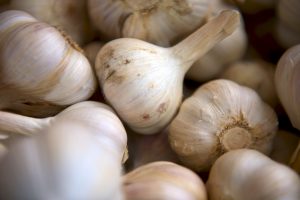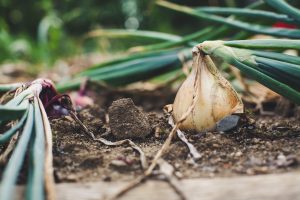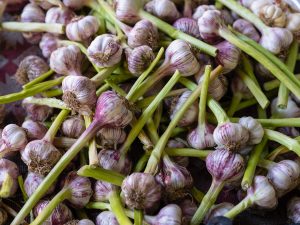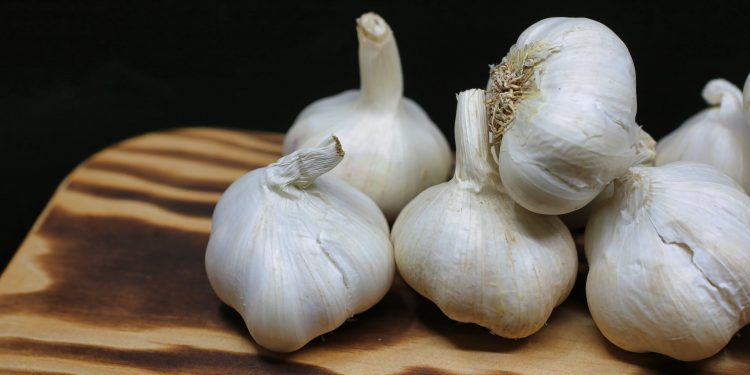One of the most staple spices found in kitchens worldwide is Garlic. It has a very strong aroma and versatile flavor that has proven to be both flavourful and healthy at the same time for centuries now. Beyond its culinary uses, garlic is also celebrated for its health benefits and has found a place in traditional medicine. If you're an avid gardener and looking to cultivate your own garlic crop, waste no time and go through the step-by-step process of garlic growth stages, from planting to harvesting.
Selecting Garlic Varieties

The journey of growing garlic begins with selecting the right varieties for your garden. Different types of garlic, such as softneck and hardneck, offer distinct flavors and adaptability to specific climates. Understanding the characteristics of each variety is crucial to ensure a successful harvest. Also take into consideration on the purpose of the garlic, like do you want to use to in the kitchen for cooking various dishes, softneck garlic is mostly preferred or to make some ayurvedic medicine, hardneck garlic is used or do you want to use it to make pickles and wine amongst other things.
Preparing the Soil
Preparing the soil is the most important step in creating the ideal environment for the garlic plant to grow right. Garlic prefers soil with a pH between 6.0 and 7.0. If the soil is too acidic, mix in ground limestone; if it's too alkaline, add peat moss, balance the soil to the right proportion so the plant will grow with the essential nutrients and you can then have a successful harvest.
Garlic best grows in sandy loam soil that is well-drained. It is always recommended that the soil is rightly mixed with compost and fertilizer before planting. Proper soil preparation sets the foundation for healthy garlic bulbs.
Also Read: Pitaya or Dragon Fruit? Unveil the Differences!
Planting Garlic

Once the soil is ready, it's time to plant your garlic cloves. Garlic is grown in temperatures ranging from 32° to 50°F (0-10°C).This temperature is important mostly during its first two months of growth, that is when the roots are established and bulbs begin to form. Garlic is not affected by hot weather as it matures. Planting garlic in spring while the soil is still cool is a very effective approach. Understanding the timing of planting, whether in the fall or spring, is also crucial for a successful garlic crop.
Nurturing the Growing Garlic
As garlic progresses through its growth stages, it requires care and attention to ensure optimal development. Make sure that there is good drainage when watering the garlic plant. Garlics grow well when given fertilizers that are high on nitrogen; some of the organic ones include chicken manure pellets, fish fertilizers, and seaweed extract. It needs six or more hours per day of direct sunlight so it shouldn't be planted in the shade, never.
Also Read: From Soil to Spud: 8 Key Potato Growing Stages
Recognizing Garlic Growth Stages
Understanding the various growth stages of garlic is vital for gauging its development and addressing specific needs at each phase. Identifying which stage you garlic plant is in is important . The stages are
- Germination.
- Spring Garlic (aka Green Garlic)
- Scaping.
- Young Bulb Stage.
- Mature Bulb Stage.
- Flowering Stage.
- Harvesting Stage.
From the emergence of green shoots to the formation of scapes, each growth stage must be looked after differently. For example while planting you must check that the temperature is cool enough and while it is maturing you must see to it that it is getting enough sunlight and nutrition to grow and provide a successful harvest.
Harvesting Garlic

The anticipation of harvesting garlic is an exciting moment for any gardener. It is easy to know when the garlic’s are ready to harvest, the pro tip is that the garlic leaves begin to yellow, which tells us that we are near to the harvest time. There is only one way to know for sure if the garlic is ready to harvest and that is to dig out a bulb. You inspect and see a fully grown garlic, looks like you’re good to go and start the harvest. It’s important to know that when the tops start yellowing, there will be no more bulb development so if you’re looking for bigger buds there is no use of waiting on it as they won’t get bigger post that stage.
Also Read: What Are Zinnias? Do Deer Eat Zinnias? Explained!!
Storing and Using Your Garlic Harvest
Once harvested, proper storage is essential to maintain the quality of your garlic bulbs. If you are storing garlic for kitchen and usage purposes, then it is best you store whole of the garlic, or unpeeled garlic cloves, in a cool, dry place in a vessel with good airflow .
Garlic bulbs that are meant to be used as seed for planting the next year's harvest should be stored at 50 °F and at relative humidity of 65-70%. Garlic cloves break most rapidly between 40 to 50 °F, so storage at this temperature range should be avoided if it’s being stored for a longer duration of time.
Conclusion
To sum it all up, cultivating garlic is a rewarding experience that allows you to savor the success of your labor in the form of flavorful, homegrown bulbs. Hoping this guide has helped you walk through each step of the garlic growth stages, offering insights into selecting varieties, preparing the soil, planting, nurturing, recognizing growth stages, addressing challenges, harvesting, and finally, storing and using your garlic harvest. Try following the guide and plant some garlic’s in your garden.
























